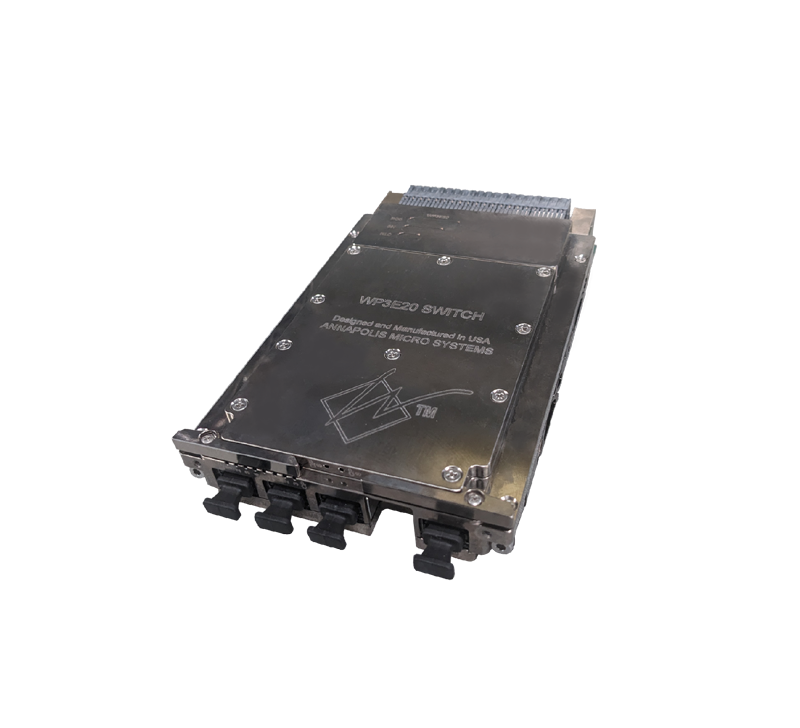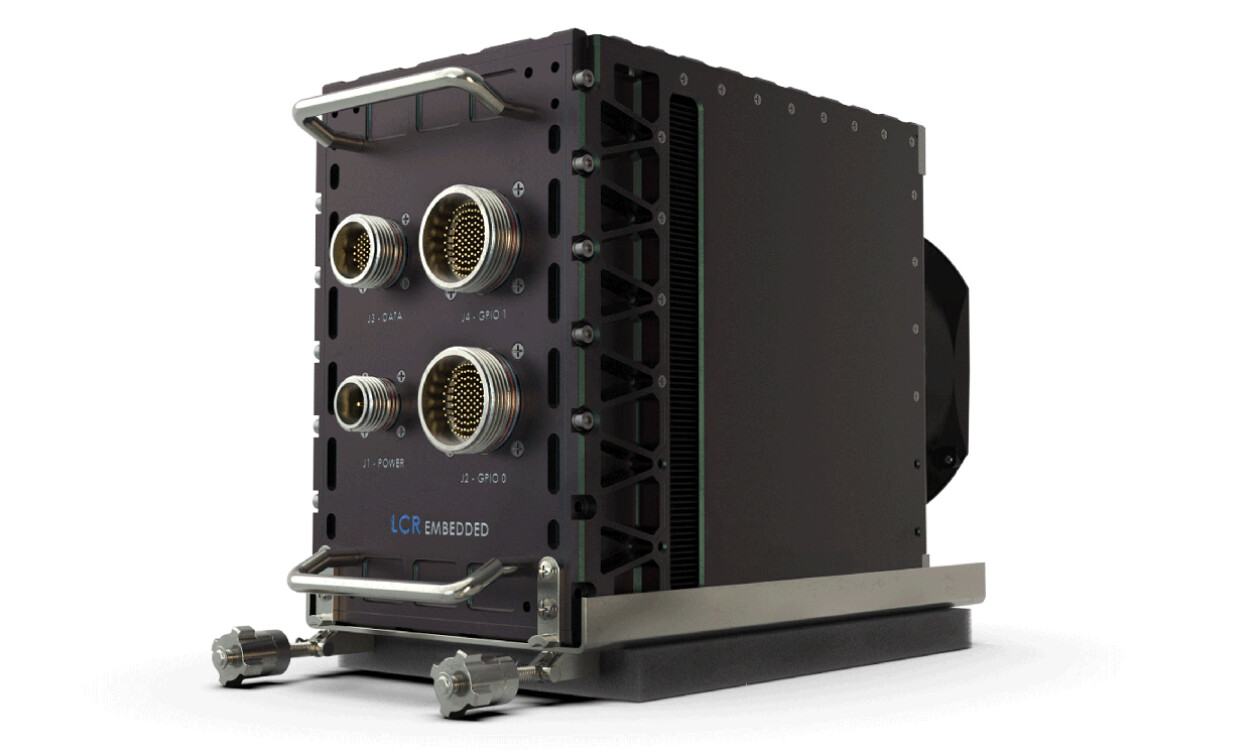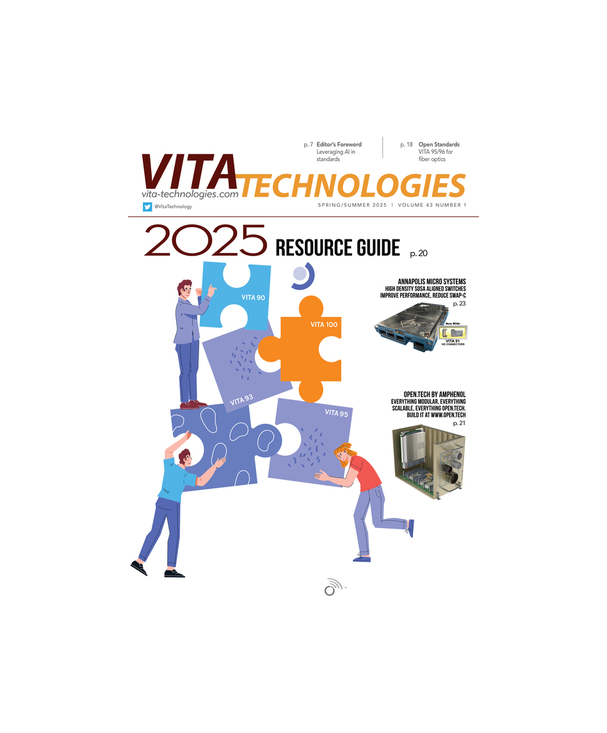VME: According to data from VITA, most of the new business for VME-like systems is for VME64 itself, not for VPX or OpenVPX. What is Curtiss-Wright seeing?
REICHENFELD: Curtiss-Wright Controls Electronic Systems is developing more mixed backplane (hybrid) chassis to take advantage of newer processor designs and higher-speed signaling capability without the need to respin legacy I/O cards. Some systems can incorporate VME64, CompactPCI, and 3U/6U VPX/OpenVPX cards into a single chassis. Many I/O functions including purpose-built interfaces are only still available in VME64. Some systems are still incorporating aging VME64 processors with these interface cards to take advantage of standard chassis and backplanes when cutting-edge processor designs are not required. Therefore, there is an ongoing need for mixed backplanes technology.
VME: Briefly describe the key systems-level differences between VME and VPX.
REICHENFELD: VME is a parallel multi-drop bus with a single path for data. VME connectors handle signal frequencies typically less than 1 GHz. VPX is based on high-speed point-to-point serial interconnects, typically PCIe, Serial RapidIO, and GbE. It allows multiple paths for data, which can operate simultaneously. Each channel has two endpoints with data channels in each direction between the two points. The signaling rates are 2.5 to 6 GHz per signal pair. For higher data rates, interfaces are grouped together in parallel channels. 4X or four pairs in each direction is the most common. This gives a raw rate of 10 Gbps. These interfaces can be switched, similar to the Ethernet switch concept, for multiple data path possibilities. VPX at a system level has advantages over VME with higher I/O pin counts available and higher-rate I/O signaling.
VME: What makes VPX “better than” VME (64?)? In what ways is it inferior?
REICHENFELD: It really depends on the application. System architectures and card selection are based on many factors including: size, weight, power, cost, availability, performance risk, and reliability. Data rates are higher on VPX serial fabrics, which are scalable in width to achieve desired bandwidths. Multiple data transfers can occur at the same time. VPX enables the use of 3U cards in systems with moderate I/O capability where previous 3U cards were very I/O pin limited. VME does have a 3U version, but every pin is used for the bus, so it has limited uses for I/O and mezzanine cards. VPX backplanes are more complex and require tighter design rules, because of the higher-speed signals. Since there are many potential connections, routing of the backplane is more difficult because of the restrictions on controlled impedance traces. Therefore, signal integrity analysis and simulation become essential for successful performance of VPX designs.
VME: Which kinds of systems use a combination of VME and VPX/OpenVPX? Can you dive down a bit and describe the implementation differences?
REICHENFELD: Technology insertion applications will use both VME and OpenVPX/VPX, for old and new technology use. Implementing hybrid processors used as a VPX bridge card will incorporate both VME and VPX interconnects. Part of the system can be legacy cards, usually to preserve software investment, and part can be VPX, to allow for higher data rates and greater networking capability. With a hybrid system, existing VME cards can run their existing software, but add additional performance capabilities with VPX. A bridge card can interface between the VME and fabric connections and pass data over VME to fabric or GbE data paths. Existing VME cards with GbE ports can also pass data over that path, through a switch, to any other card in the system. These are several potential ways to interface a combination of VME and VPX/OpenVPX.
VME: VPX adds substantially higher-rate and more I/O lines. How would you match this with a VME system (using five-row connectors and P0)?
REICHENFELD: VPX has more data transfer capability, both in data rates and number of separate connections, and more available I/O lines on 3U/6U systems. Fiber connections and coax RF connections are also supported in VPX, which allows these signals to be incorporated into the backplanes. VME cards have been known to replace the P0 connector with higher-speed and fiber connectors to match some of the data rates currently found in VPX, but are usually a custom build. Another way to transfer high-speed data in VME systems to an LRU front panel is to use front-panel connections on the cards, such as GbE, RF, and fiber, to allow signal routing over the top of the cards rather than incorporated into the backplane.
VME: Suppose a designer has a VME64 system with dual PMC mezzanine cards. What’s the best way to move to VPX?
REICHENFELD: The availability of 6U VPX cards that incorporate two PMC/XMC sites provides the ability to integrate legacy PMC modules and provides a path to incorporate future XMC modules. Other system architecture options would include a VPX processor with a VPX PMC/XMC carrier card to integrate the legacy modules.
VME: Give us a quick answer: What’s the difference between VPX (VITA 46) and OpenVPX (VITA 65)?
REICHENFELD: VITA 65 is a selected subset (called “profiles”) of the almost infinite universe of possible VITA 46 pinouts and interconnects. VITA 65 has defined profiles of the parts of a system: Backplane, which defines interconnects between slots; Slot, which defines which type of signals appear on which card connectors (and where); and Module, which defines which protocols appear on each signal type, along with card size and cooling. OpenVPX allows higher levels of interoperability and standardization of backplanes that are compatible with OpenVPX cards from multiple vendors.
VME: What are the issues when it comes to software, for example, how about integrating a legacy VME64 and OpenVPX system?
REICHENFELD: The investment in software is always a key part of a system architecture trade study. Processor performance and operating system availability are key to this trade-off. Sometimes this comes down to which version of an operating system is available that is compatible with the legacy software and tools. The porting of legacy software is minimized if similar processor families are used with defined software application interfaces. The trade-off is always nonrecurring costs and risks associated with moving to a new processor versus nonrecurring costs and risks associated with designing hybrid backplanes with soon-to-be obsolete processors. The trade-off becomes even more difficult if the software has been safety certified (for example, to DO-178B).
VME: What does the future hold for VME?
REICHENFELD: The future should be interesting. Survival is all about innovation and adaptation.
Innovation involving smaller form factor standards with lower size, weight, power, and cost is driving the market. Even though a VME solution might have lower development costs, a system based on 6U VME card-sets simply cannot meet platform volume restrictions.
Adaptation is seen as development of newer VME64 designs is pin compatible with legacy systems to minimize system redesign efforts and eliminate obsolescence. VME still has a future in systems designs that have a lower tolerance for non-recurring engineering and compatibility with legacy software. Obsolescence management and technology insertion will be part of VME’s future. CS
Curtiss-Wright Controls
Electronic Systems
661-257-4430






